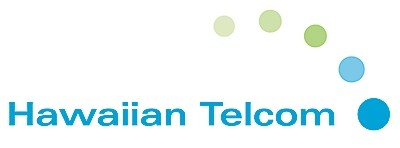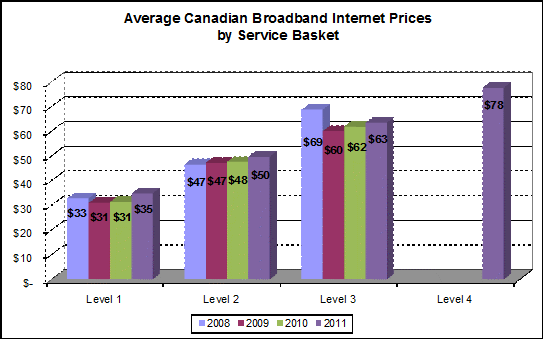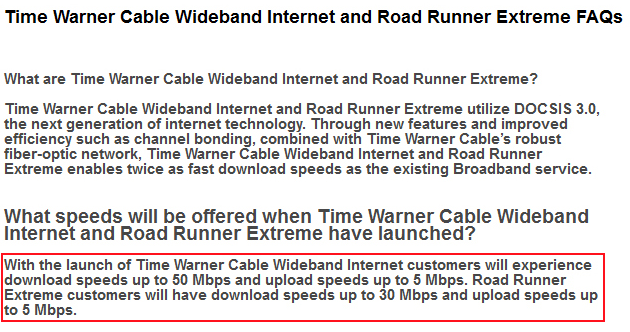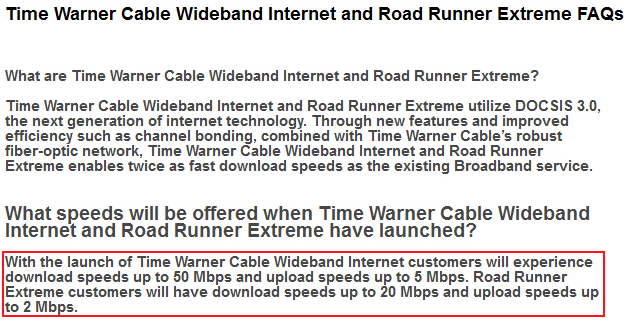After more than a decade of “beep, beep,” Time Warner Cable is retiring Geococcyx californianus, the ground foraging cuckoo better known as the Greater Roadrunner.
It’s all part of a “brand refresh,” Time Warner’s Jeannette Castaneda tells Fortune. The idea is to “create excitement around the eye-ear symbol.” For now, the “Road Runner” name will remain — just the mascot disappears.
When Road Runner was first introduced in 1995 in Elmira, N.Y., it was designed to be a localized high-speed online portal, originally called the “Southern Tier On-Line Community.” Portals were all the rage in the 1990s, designed to serve as a unified home page to help users find content more easily. When the cable modem broadband service finally spread to other markets, it was branded ‘LineRunner.’
But Time Warner’s marketing people decided the company’s best strategy to convince users that paying at least double the price they were paying for dial-up was worth the investment when you considered how fast cable broadband service was, and how it would outperform any dial-up connection. The cable company spent months negotiating with Warner Bros. to license the use of the roadrunner in the old Wile E. Coyote cartoons. The company even changed the name of their broadband product to Road Runner to drive home the speed message.
Over the years, Time Warner has blanketed customers in postcard mailers, advertising, and billboards showcasing their broadband mascot, but no more. While Time Warner Cable would not provide exact reasons for the brand change, we suspect there are several factors involved:
- The cost to license the roadrunner character from Warner Bros. In 1998, regional Time Warner representatives shared that the licensing agreement with Warner Bros. was costly and complicated. Warner Bros. maintains strict control over their licensed characters and how they are used.
- In the past, emphasizing speed was essential in convincing consumers to drop their old provider for the cable company’s alternative. But broadband penetration in most of Time Warner’s markets has already reached a high level and most of those still refusing to take the service are not going to be convinced by speed arguments. For these holdouts, lack of interest and the cost of the service are the most important factors, and the roadrunner character does not speak to these concerns.
-
The telecom industry, notably cable, has spent years trying to retire the phrases “Internet access” and “Internet Service Provider.” They don’t even like the word “broadband.” For them – it’s High Speed Internet (HSI) or “High Speed Online.” They have put the words “high speed” in the very term they use to describe Internet access.
- Time Warner Cable believes in their unified bundling of services. They aggressively pitch all of them together at a discounted price and have de-emphasized the branding that used to be associated with individual package components. For example, Time Warner didn’t retire the name “LineRunner” when they rebranded their cable modem service Road Runner. They simply re-used the name for their telephone service. Time Warner tested LineRunner in the Rochester, N.Y. market before ditching the product for a Voice Over IP service they now like to call “digital phone.” Today, most of Time Warner Cable’s most visible ancillary branding is done for their triple-play packages. Remember “All the Best?”
Fortune thinks the retirement of the roadrunner may also have something to do with the company’s desire to implement an Internet Overcharging scheme:
TWC, like other big ISPs, is a leading proponent of imposing bandwidth caps on its Internet users. Imagine the possibilities for illustrating articles about this topic – Wile E Coyote (perhaps wearing a TWC ballcap) tripping up the Road Runner with piano wire, or finally getting his revenge and hurling the obnoxious bird off a cliff.


 Subscribe
Subscribe













